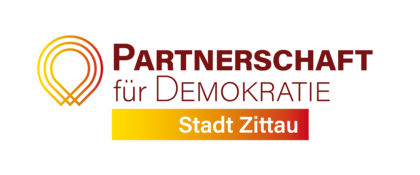With the digital exhibition "And you're out!", students show how political persecution and social exclusion manifested themselves in Zittau during the Nazi era.

Nicola Bell's gaze is fixed on the ground. The molecular biotechnology student is standing on the sidewalk at Weberstraße 79 in Zittau. Three small square brass plaques with rounded corners and edges, known as stumbling blocks, have just been set into the ground there. The letters, hammered in by hand using a hammer and chisel, indicate that this was the last Zittau residence of the Gessler family. A Jewish family whose members perished under National Socialism.
"The Stolpersteine commemorate the fate of people who were persecuted, murdered, deported and expelled or even driven to suicide during the Nazi era," explains Nicola Bell.
”It was a topic that the student couldn't let go of. At the most recent Stolperstein laying ceremony, she decided that more students needed to be made aware of the issue. "There are actually people who were asked to spit on the memorial plaques at some point and therefore think this is normal without questioning it," the student explains, shaking her head. "I thought to myself that there should be a campaign that educates people and clears up prejudices."
The idea was born to tell selected stories about Jewish life in Zittau on information boards and exhibit them in the University Library.
The student quickly convinced her fellow student Timon Conrad, whom she knew through their work together on the student council . Together with other HSZG students, the two made contact with the student association sneep, got students from the IHI on board and approached the Hillersche Villa in Zittau.
Anne Kleinbauer is responsible for Jewish regional history there and was impressed by the commitment and dedication of the students.
"Nicola Bell approached me directly after the laying of the stumbling blocks and asked how she could make a contribution. We stayed in touch and I have to say that she and her fellow students implemented their project entirely on their own initiative."
”She herself supported the students as an academic advisor. "They could turn to me at any time with questions. They then independently submitted the funding application to the Partnership for Democracy, coordinated all appointments and meetings and designed the exhibition, " explains the expert on Jewish life in Zittau.
Documents were studied, photographs evaluated and existing texts rewritten, including English and Czech translations. A Czech student was particularly helpful here.

The results provide clear indications of what anti-Semitism looked like in Zittau and how the Jewish community suffered as a result. "Jewish life was always perceived as a separate part," Timon Conrad discovered during his research. The energy and environmental engineering student demands: "You have to bring it into the culture and not let it disappear from Zittau."
For example, few people know about the Jewish cemetery, which can be found outside the town's current industrial estate, far away from the actual central cemetery. "The exhibition is about exclusion in general," emphasizes Timon Conrad. "Albert Müller, for example, had psychological problems. He was murdered by the Nazis in a 'sanatorium and nursing home' and is an example of a non-Jewish victim of persecution."
Nicola Bell explains in more detail: "You can see from this that someone can experience exclusion very quickly if he or she belongs to marginalized social groups and is blamed for problems. All it takes is a certain conspicuousness. The turnaround can happen quickly. In my opinion, this is still the case today, if you look at the attacks on asylum homes, for example."
Originally, a permanent exhibition was planned in the University Library in Zittau from December 2020 to March 2021. Large panels with descriptive texts and images of contemporary documents and photos were intended to educate interested parties about the town's exciting and tragic past. The move to the Liberec City Library, directly on the site of the former Liberec Synagogue, was to take place from next April.
"Then the lockdown came and our plans were thwarted," says Timon Conrad. "We quickly changed our plans and turned the on-site exhibition opening into a digital evening." Posters advertised the event at the end of December.
”The website for the "And you're out" exhibition was created and became the central point of contact.
"When it's possible again, we'll pick up the original plans again," Nicola Bell is certain. In the meantime, the panels are being stored in the Hillersche Villa. In addition to an installation in libraries, the students can well imagine that the exhibits will also be used in schools in the future to provide sustainable and continuous education.
"And you're out!" is a project by students for students and Zittau residents. Anyone who would like to support the continuation and expansion of the project is very welcome! Interested parties can get in touch here.
How do the students deal with the topic after their intensive research? "You're constantly dealing with it and actively looking for traces or stumbling blocks, which unfortunately are always made unrecognizable," says Timon Conrad. "Since then, I literally walk through the city and through life with much more open eyes."
"The topic is certainly very depressing. But it is all the more important that people know about it," Nicola Bell is certain. "We are standing up to those who want it to be forgotten."
Text: Cornelia Rothe M.A.
Nicola Bell


